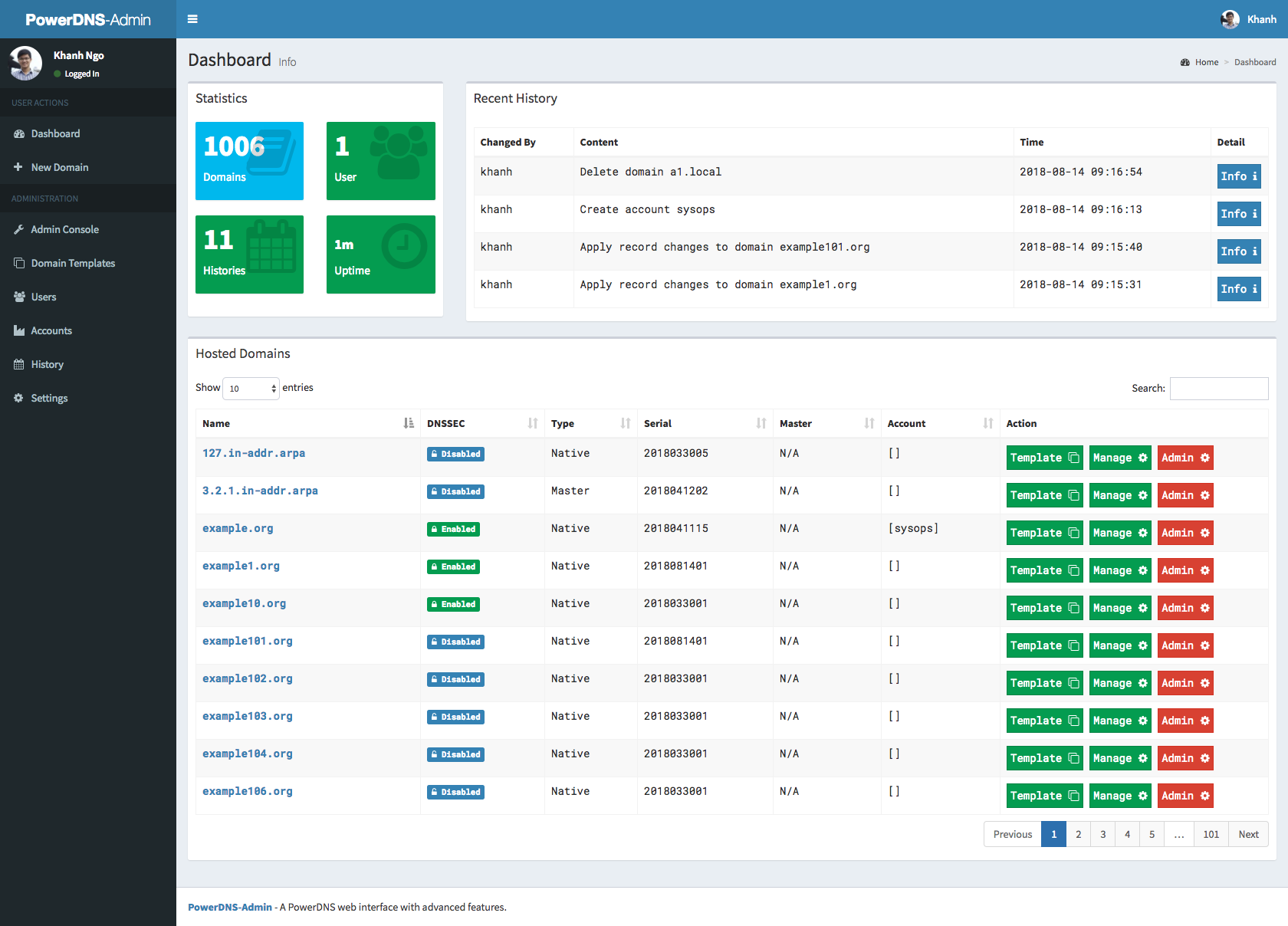mirror of
https://github.com/cwinfo/powerdns-admin.git
synced 2025-10-07 00:03:57 +00:00
452c4a02d8cac1e4d971f7d6d7e0c0e5312a300a
PowerDNS-Admin
A PowerDNS web interface with advanced features.
Features:
- Multiple domain management
- Domain template
- User management
- User access management based on domain
- User activity logging
- Support Local DB / SAML / LDAP / Active Directory user authentication
- Support Google / Github / Azure / OpenID OAuth
- Support Two-factor authentication (TOTP)
- Dashboard and pdns service statistics
- DynDNS 2 protocol support
- Edit IPv6 PTRs using IPv6 addresses directly (no more editing of literal addresses!)
- Limited API for manipulating zones and records
Running PowerDNS-Admin
There are several ways to run PowerDNS-Admin. Following is a simple way to start PowerDNS-Admin using Docker
Step 1: Update the configuration
Edit the docker-compose.yml file to update the database connection string in SQLALCHEMY_DATABASE_URI. Other environment variables are mentioned in the legal_envvars.
To use docker secret feature it is possible to append _FILE to the environment variables and point to a file with the value stored in it.
Step 2: Start docker container
$ docker-compose up
You can now access PowerDNS-Admin at url http://localhost:9191
NOTE: For other methods to run PowerDNS-Admin, please take look at WIKI pages.
Screenshots
Languages
Python
50.5%
HTML
44.5%
JavaScript
3.4%
CSS
0.9%
Dockerfile
0.4%
Other
0.2%


